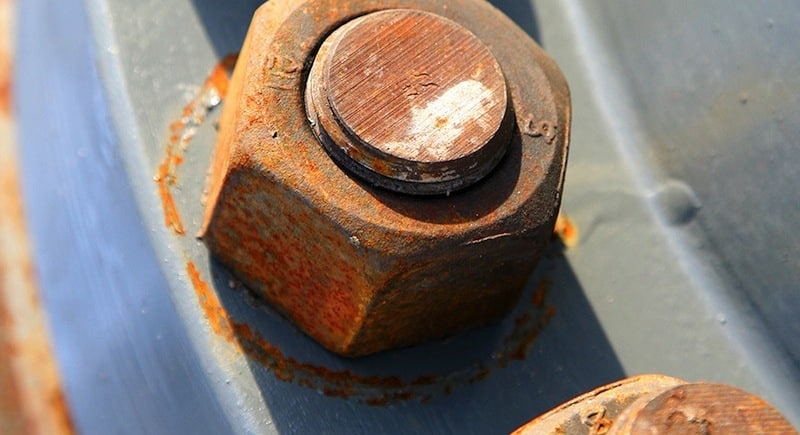Galvanic corrosion is a special form of corrosion that occurs when two metals with different electrochemical potentials come into contact. As a civil engineer, it is important to understand and know the effects of galvanic corrosion and how to avoid it. This blog article aims to provide an overview of galvanic corrosion and the various strategies and processes that civil engineers should use to mitigate its effects.
Galvanic corrosion occurs when two dissimilar metals come into contact with each other. In this case, the electrolyte can trigger a reaction between the two metals, leading to corrosion.
This is most commonly seen with metal fittings attached to metal pipes (e.g. steel pipe connectors or elbows on galvanized steel pipes) or dissimilar metal fittings. Galvanic corrosion is very dangerous because it can occur without warning and is virtually undetectable until it destroys the system.
Galvanic corrosion damages alloys of dissimilar metals. This can be a problem in the electronics and automotive industries, among others. Galvanic corrosion occurs when two dissimilar metals are in close contact with each other. If one of the metals is more noble than the other, it will corrode, while the less noble metal will have little or no corrosion.
One of the effects of galvanic corrosion is that it can cause two metals to bond. This is because when two metals come into contact, the metal with the more positive electrochemical potential begins to corrode. This process creates an electrical current between the two metals, which can cause them to bond together.
In some cases, this bonding can be beneficial, such as when two pieces of metal need to be joined together. However, in other cases it can be harmful, such as when it causes two pieces of metal to corrode more quickly than they would on their own.


Galvanic corrosion is a specific form of corrosion that can have various effects on metallic structures. As a civil engineer, it is important to know the different ways to prevent or mitigate the effects of galvanic corrosion.
One of the most common effects of galvanic corrosion is that it can cause metals to stick together. This is because when two metals come into contact, the metal with the more positive electrochemical potential begins to corrode. This process creates an electrical current between the two metals, which can cause them to bond together. In some cases, this bonding can be beneficial, such as when two pieces of metal need to be connected together. However, in other cases, this connection can be harmful, such as when it causes two pieces of metal to corrode more quickly than they would on their own.
How to prevent galvanic corrosion
The following preventive measures can be taken.
- One option is to use a process called cathodic corrosion protection. This process uses electrical current to reverse the corrosion process.
- Another way to prevent galvanic corrosion is to use a process called sacrificial anodes. This process uses a metal with a more positive electrochemical potential than the metal of the structure to be protected. The sacrificial anode corrodes in place of the metal of the structure, protecting it from corrosion .
- A good rule of thumb for metal systems is that all metal parts should be made from the same material.
- If you must use dissimilar metals in close proximity, always make sure there are protective coatings between them.
- Using metal-to-metal installations
- Use of spacers
You can also find the article about education or rust in the article What causes rust? .

